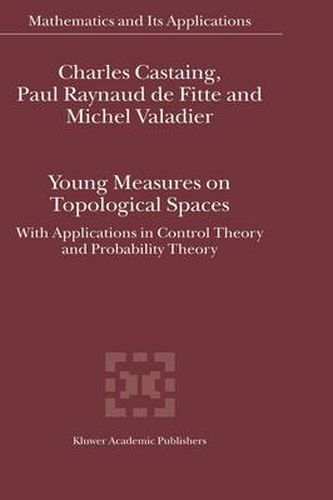Readings Newsletter
Become a Readings Member to make your shopping experience even easier.
Sign in or sign up for free!
You’re not far away from qualifying for FREE standard shipping within Australia
You’ve qualified for FREE standard shipping within Australia
The cart is loading…






This title is printed to order. This book may have been self-published. If so, we cannot guarantee the quality of the content. In the main most books will have gone through the editing process however some may not. We therefore suggest that you be aware of this before ordering this book. If in doubt check either the author or publisher’s details as we are unable to accept any returns unless they are faulty. Please contact us if you have any questions.
Classicalexamples of moreand more oscillatingreal-valued functions on a domain N ?of R are the functions u (x)=sin(nx)with x=(x ,…,x ) or the so-called n 1 1 n n+1 Rademacherfunctionson]0,1[,u (x)=r (x) = sgn(sin(2 ?x))(seelater3.1.4). n n They may appear as the gradients?v of minimizing sequences (v ) in some n n n?N variationalproblems. Intheseexamples,thefunctionu convergesinsomesenseto n ameasure on ? xR, called Young measure. In Functional Analysis formulation, this is the narrow convergence to of the image of the Lebesgue measure on ? by ? ? (?,u (?)). In the disintegrated form ( ) ,the parametrized measure n ? ??? ? captures the possible scattering of the u around ?. n Curiously if (X ) is a sequence of random variables deriving from indep- n n?N dent ones, the n-th one may appear more and more far from the k ?rst ones as 2 if it was oscillating (think of orthonormal vectors in L which converge weakly to 0). More precisely when the laws L(X ) narrowly converge to some probability n measure , it often happens that for any k and any A in the algebra generated by X ,…,X , the conditional law L(X|A) still converges to (see Chapter 9) 1 k n which means 1 ??? C ® ?(X (?))dP(?)?? ?d b n P(A) A R or equivalently, ? denoting the image of P by ? ? (?,X (?)), n X n (1l ??)d? ?? (1l ??)d[P?].
$9.00 standard shipping within Australia
FREE standard shipping within Australia for orders over $100.00
Express & International shipping calculated at checkout
This title is printed to order. This book may have been self-published. If so, we cannot guarantee the quality of the content. In the main most books will have gone through the editing process however some may not. We therefore suggest that you be aware of this before ordering this book. If in doubt check either the author or publisher’s details as we are unable to accept any returns unless they are faulty. Please contact us if you have any questions.
Classicalexamples of moreand more oscillatingreal-valued functions on a domain N ?of R are the functions u (x)=sin(nx)with x=(x ,…,x ) or the so-called n 1 1 n n+1 Rademacherfunctionson]0,1[,u (x)=r (x) = sgn(sin(2 ?x))(seelater3.1.4). n n They may appear as the gradients?v of minimizing sequences (v ) in some n n n?N variationalproblems. Intheseexamples,thefunctionu convergesinsomesenseto n ameasure on ? xR, called Young measure. In Functional Analysis formulation, this is the narrow convergence to of the image of the Lebesgue measure on ? by ? ? (?,u (?)). In the disintegrated form ( ) ,the parametrized measure n ? ??? ? captures the possible scattering of the u around ?. n Curiously if (X ) is a sequence of random variables deriving from indep- n n?N dent ones, the n-th one may appear more and more far from the k ?rst ones as 2 if it was oscillating (think of orthonormal vectors in L which converge weakly to 0). More precisely when the laws L(X ) narrowly converge to some probability n measure , it often happens that for any k and any A in the algebra generated by X ,…,X , the conditional law L(X|A) still converges to (see Chapter 9) 1 k n which means 1 ??? C ® ?(X (?))dP(?)?? ?d b n P(A) A R or equivalently, ? denoting the image of P by ? ? (?,X (?)), n X n (1l ??)d? ?? (1l ??)d[P?].